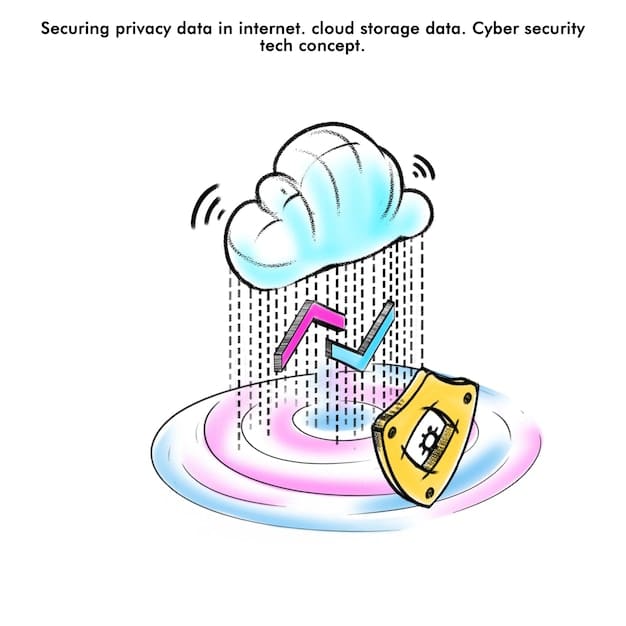Smart Contract Vulnerabilities: Top 5 Risks in 2025

In 2025, smart contract vulnerabilities remain a critical concern, with reentrancy attacks, timestamp dependence, integer overflow/underflow, denial-of-service (DoS), and unchecked external calls posing the most significant risks to decentralized applications and blockchain security.
As we approach 2025, the world of decentralized applications (dApps) and blockchain technology continues to evolve, and with it, the sophistication of potential threats. Understanding smart contract vulnerabilities: Top 5 security risks to avoid in 2025 is crucial for developers and stakeholders alike to ensure the integrity, security, and reliability of their blockchain-based systems.
Understanding Smart Contract Vulnerabilities
Smart contracts, self-executing agreements written in code and deployed on a blockchain, have revolutionized various industries by automating processes and eliminating intermediaries. However, their immutable nature means that once a contract is deployed with vulnerabilities, it can be exploited, leading to significant financial losses and reputational damage.
Identifying and mitigating vulnerabilities in smart contracts requires a deep understanding of potential attack vectors. Proactive security measures, rigorous testing, and continuous monitoring are essential to protect against emerging threats and ensure the long-term viability of blockchain applications.

Top 5 Smart Contract Security Risks in 2025
In 2025, several smart contract vulnerabilities stand out as the most pressing concerns. These risks not only threaten individual projects but also the broader ecosystem of decentralized finance (DeFi) and blockchain applications.
Reentrancy Attacks
Reentrancy attacks remain a significant threat due to their potential for massive financial losses. These attacks exploit vulnerabilities in contract logic, allowing an attacker to repeatedly call a function before the initial execution is completed.
Mitigating reentrancy attacks involves implementing checks-effects-interactions (CEI) patterns, using mutex locks, and limiting the amount of gas available for external calls. Regular security audits and formal verification methods can also help identify and address reentrancy vulnerabilities.
Timestamp Dependence
Smart contracts that rely on block timestamps for critical logic can be vulnerable to manipulation. Miners can influence block timestamps to a certain extent, potentially altering the outcome of contract executions.
- Avoid using block timestamps for critical logic.
- Implement alternative methods for time-sensitive operations.
- Use oracles to retrieve accurate and reliable time data.
Integer Overflow/Underflow
Integer overflow and underflow vulnerabilities occur when a mathematical operation exceeds the maximum or minimum value that a variable can hold. This can lead to unexpected behavior and potentially allow attackers to manipulate contract logic.
Using safe math libraries, such as OpenZeppelin’s SafeMath, can help prevent integer overflow and underflow vulnerabilities. Regular code reviews and testing can also identify potential issues before deployment.

Mitigating Smart Contract Vulnerabilities
Effectively mitigating smart contract vulnerabilities requires a multi-faceted approach that includes secure coding practices, rigorous testing, and continuous monitoring. By adopting these strategies, developers can significantly reduce the risk of attacks and protect their applications from exploitation.
Rigorous Testing and Auditing
Thorough testing and auditing are essential steps in ensuring the security of smart contracts. Testing involves simulating various attack scenarios and validating that the contract behaves as expected under different conditions.
Auditing involves engaging external security experts to review the contract code and identify potential vulnerabilities. Regular audits can help uncover hidden flaws and provide valuable insights into potential attack vectors.
Formal Verification
Formal verification is a mathematical technique used to prove the correctness of smart contract code. This involves creating a formal specification of the contract’s intended behavior and then using mathematical tools to verify that the code meets the specification.
- Develop formal specifications for smart contracts.
- Use formal verification tools to prove correctness.
- Integrate formal verification into the development process.
Implementing Security Best Practices
Adhering to security best practices is crucial for developing secure smart contracts. This includes following secure coding guidelines, using well-tested libraries, and avoiding common pitfalls.
Regularly updating dependencies and staying informed about the latest security threats is also important. Continuous learning and adaptation are essential to maintaining a high level of security in the ever-evolving blockchain landscape.
The Role of Security Audits
Security audits play a pivotal role in identifying vulnerabilities and ensuring the overall security of smart contracts. Independent auditors bring expertise and fresh perspective to the code review process, uncovering issues that internal teams may have overlooked.
A comprehensive security audit typically involves a line-by-line review of the contract code, as well as testing and validation of the contract’s behavior under various scenarios. The audit report provides detailed findings and recommendations for remediation.
Future Trends in Smart Contract Security
As the blockchain ecosystem continues to mature, new tools and techniques are emerging to enhance smart contract security. These advancements aim to automate vulnerability detection, improve code analysis, and provide more robust defenses against attacks.
Artificial intelligence (AI) and machine learning (ML) are being leveraged to identify patterns and anomalies that may indicate potential vulnerabilities. These technologies can analyze large volumes of code and identify subtle flaws that human reviewers may miss.
The evolution of programming languages and development frameworks is also contributing to improved smart contract security. Languages with built-in security features and frameworks that enforce secure coding practices can help reduce the risk of vulnerabilities.
In conclusion, understanding and mitigating smart contract vulnerabilities is paramount to maintaining a secure and reliable blockchain ecosystem. As we look to the future, continued investment in security research, education, and tooling will be essential to addressing emerging threats and ensuring the long-term viability of decentralized applications.
| Key Point | Brief Description |
|---|---|
| 🛡️ Reentrancy Attacks | Exploits contract logic for repeated function calls before completion. |
| ⏰ Timestamp Dependence | Vulnerable to miner manipulation of block timestamps. |
| 🧮 Integer Overflow/Underflow | Mathematical operations exceeding variable limits. |
| 🛠️ Mitigation Strategies | Secure coding, rigorous testing, and continuous monitoring. |
FAQ
Smart contract vulnerabilities are flaws in the code that can be exploited by attackers to manipulate the contract’s behavior or steal funds. These vulnerabilities can arise from various sources, including coding errors, design flaws, and outdated dependencies.
Smart contract security is critical because these contracts often manage significant amounts of digital assets. A single vulnerability can lead to substantial financial losses and damage the reputation of the project and the broader ecosystem.
Protecting smart contracts involves adopting secure coding practices, conducting thorough testing and auditing, and staying informed about the latest security threats. Formal verification can also provide a high level of assurance.
Security audits provide an independent review of smart contract code, identifying potential vulnerabilities that internal teams may have missed. This can help prevent costly exploits and improve the overall security of the contract.
AI and machine learning can be used to analyze smart contract code and identify patterns that may indicate vulnerabilities. These technologies can help automate vulnerability detection and provide more robust defenses against attacks.
Conclusion
In conclusion, securing smart contracts in 2025 requires a proactive and comprehensive approach. By understanding the top security risks and implementing robust mitigation strategies, developers can build more secure and reliable decentralized applications. Continuous vigilance and adaptation are essential to staying ahead of emerging threats and ensuring the long-term viability of the blockchain ecosystem.





